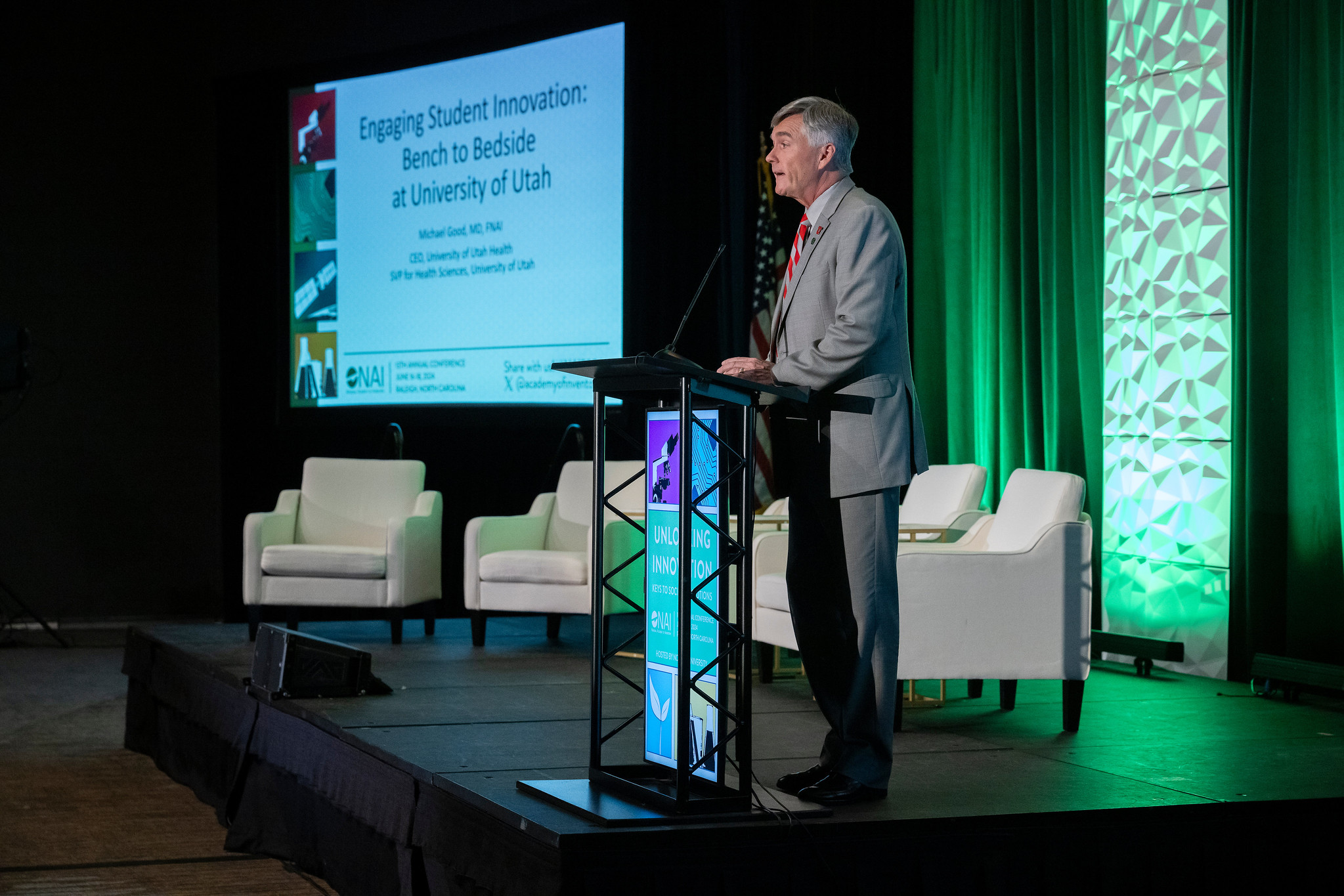
About the Human Patient Simulator

"Good’s invention, the Human Patient Simulator, was originally inspired by a trip to the batting cages. It was 1985, and as an anesthesiologist, he was frustrated that residents in his field could only practice their skills during the few times of day when surgeries were scheduled.
From "Two U Innovators Named to National Academy of Inventors"
Being recognized for his ground-breaking work on the Human Patient Simulator and continued focus on innovation throughout his career, Dr. Good, MD, CEO of University of Utah Health, Senior Vice President for Health Sciences, University of Utah, spoke to fellow inductees at the 2024 Annual Conference for the National Academy of Inventors (NAI) on June 17, 2024 in Raleigh, North Carolina.
Those chosen for induction into the National Academy of Inventors have demonstrated a prolific spirit of innovation in creating or facilitating outstanding inventions that have made a tangible impact on quality of life, economic development and the welfare of society. NAI Fellow status is nationally recognized as the highest professional distinction awarded to academic inventors.
“Being elected to the NAI is a kind of capstone,” Good says. “It’s gratifying to know that my early work has been recognized by peers as innovative and worthy of this distinction.”
In his remarks, Dr. Good, MD, CEO of University of Utah Health, highlighted the roll CMI has played in fostering innovation at the University of Utah, particularly among students through the Bench to Bedside program. This included sharing the story of Cinluma, a previous Bench to Bedside award winner. A portable, battery-powered pre-cervical cancer treatment device, Cinluma has been used to prevent cancer in 500,000+ patients in more than 80 countries.
"The Center for Medical Innovation is empowering interdisciplinary student teams to tackle global health challenges... With access to prototyping facilities, engineering support, and regulatory expertise, Bench to Bedside has trained 1,700+ student innovators to advance 350+ medical technologies and 200+ provisional patents.
Since its inception in 2012, the NAI Fellows program has grown to include 1,898 exceptional researchers and innovators who hold more than 63,000 U.S. patents and 13,000 licensed technologies. Their innovations have generated more than $3 trillion in revenue and generated 1 million jobs.
He also shared renderings of the James LeVoy Sorenson Center for Medical Innovation facility currently under construction.
“I think people come to academic medicine and academic health sciences because they want to make the world a better place,” Good says. “My goal is to create an environment at University of Utah Health that supports the creativity and wisdom that sparks innovation.”







